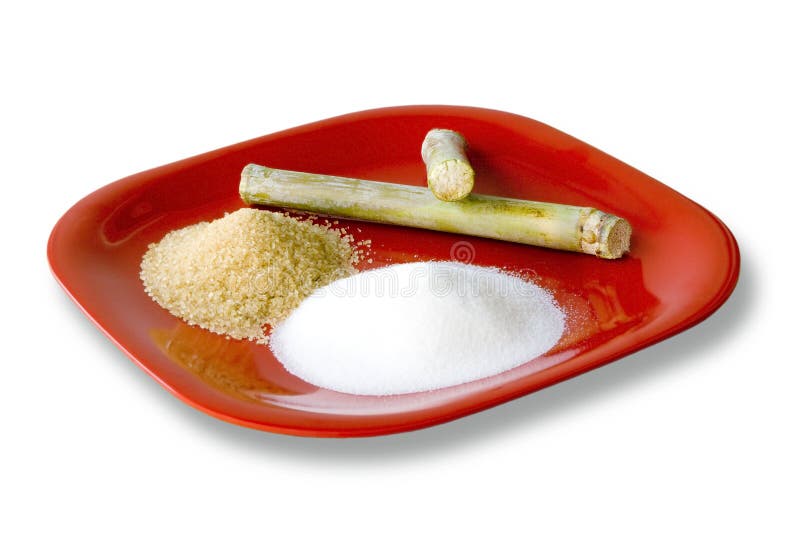The Trip of Sugarcane: From Harvest to Everyday Products
The journey of sugarcane is a complex procedure that starts with careful cultivation and finishes in a range of products that penetrate our daily lives. As we discover the different facets of sugarcane's trip, its role in sustainability and the more comprehensive ramifications for our environment come right into sharper emphasis.
Cultivation of Sugarcane
The farming of sugarcane is a crucial farming process that calls for particular ecological conditions and administration practices. Ideal growth happens in subtropical and tropical areas where temperatures vary in between 20 ° C and 32 ° C. Adequate rainfall or watering is necessary, as sugarcane thrives in damp dirt with well-drained conditions (sugarcane product). Dirt quality considerably influences yield; therefore, farmers often carry out dirt examinations to identify nutrient demands
This method facilitates effective collecting and makes the most of sunlight exposure. Crop rotation and intercropping are recommended techniques to boost dirt fertility and lower parasite problems.
Prompt application of these fertilizers can significantly boost sugar yields. Overall, effective sugarcane cultivation pivots on a combination of ecological stewardship, calculated planning, and recurring management techniques.
Collecting Techniques
Effective sugarcane growing culminates in the collecting phase, which is crucial for making best use of yield and ensuring high quality. The timing of the harvest is essential; sugarcane is typically gathered when sucrose degrees top, generally between 10 to 18 months after planting. This period differs based on climate, dirt type, and sugarcane range.
Collecting techniques can be generally categorized into guidebook and mechanical methods. Hands-on harvesting is labor-intensive, relying upon competent employees that use machetes to cut the stalks short. This approach allows for careful harvesting, where just the ripest canes are selected, consequently enhancing overall sugar material.
Alternatively, mechanical harvesting has actually gained popularity due to its effectiveness and cost-effectiveness. Specialized farmers furnished with cutting knives and conveyor systems can process big locations promptly, significantly decreasing labor costs. Nevertheless, this strategy might lead to the inclusion of immature canes and a prospective reduction in sugar top quality.

Despite the technique utilized, making sure that gathered walking sticks are carried quickly to processing centers is essential. Prompt handling minimizes perishing and maintains the stability of the sugarcane, setting the stage for optimum handling.
Handling Techniques
Processing sugarcane entails numerous important steps that transform the collected stalks right into functional products, largely sugar and molasses. The preliminary stage is cleaning the walking stick to remove dirt and particles, followed by the removal of juice with crushing or milling. This procedure typically uses hefty rollers that damage the walking stick fibers to release the pleasant liquid contained within.
As soon as the juice is drawn out, it undertakes information, where pollutants such as soil fragments and bagasse are removed. This is often attained by adding lime and warming the juice, allowing sedimentation. The made clear juice is i loved this after that concentrated through dissipation, where water material is reduced, leading to a thick syrup.

Eventually, the handling of sugarcane not only generates sugar and molasses but likewise lays the foundation for various by-products, which will certainly be explored in succeeding conversations.
Products Derived From Sugarcane
Sugarcane is a versatile crop that produces a large array of products past simply sugar and molasses. Among the primary spin-offs are ethanol and biofuels, which have actually acquired prominence as renewable energy resources. Ethanol, generated via the fermentation of sugarcane juice, functions as an alternative to fossil gas and is often mixed with gas to develop cleaner-burning gas, reducing greenhouse gas emissions.
Additionally, sugarcane is a considerable source of bagasse, the fibrous residue staying after juice removal. Bagasse is made use of in numerous applications, consisting of the manufacturing of paper, eco-friendly packaging, and as a biomass fuel for energy generation. Its use not only decreases waste but likewise improves the sustainability of sugarcane processing.
Additionally, sugarcane-derived products reach the food industry, where it functions as an all-natural flavoring agent and sweetener in numerous cooking applications. In the realm of cosmetics, sugarcane extracts are incorporated right into skin care products due to their all-natural exfoliating properties.
Ecological Influence and Sustainability
The growing and processing of sugarcane have significant effects for ecological sustainability. This crop requires significant water resources, frequently leading to deficiency of regional water supplies and influencing surrounding communities. In addition, using fertilizers and chemicals in sugarcane farming can result in dirt deterioration and river air pollution, presenting risks to biodiversity.

Sustainable sugarcane farming likewise advertises dirt wellness with plant turning and decreased husbandry, enhancing carbon sequestration. The adoption of my response these methods not just supports environmental stability but additionally boosts the resilience of farming neighborhoods versus environment change.
Final Thought
In recap, the trip of sugarcane encompasses various stages from growing to handling, inevitably causing a wide range of items. The value of sugarcane extends beyond mere sweeteners, adding to sustainable power via ethanol manufacturing, lasting packaging through bagasse, and natural essences for cosmetics. This diverse plant plays an essential duty in both nutritional enrichment and ecological sustainability, highlighting its importance in contemporary agricultural and industrial practices.
Successful sugarcane cultivation culminates in the harvesting stage, which is crucial for taking full advantage of return and making sure high quality. The timing of the harvest is vital; sugarcane is typically collected when sucrose degrees optimal, generally in between 10 to 18 months after growing.Handling sugarcane entails a number of important actions that transform the harvested stalks into useful items, mostly sugar and molasses.Sugarcane is a flexible plant that generates a large range of products past simply sugar and molasses. Furthermore, the use of fertilizers and chemicals in sugarcane farming can result in soil degradation and river contamination, positioning risks to biodiversity.
Comments on “From Sugarcane Product to Energy: The Multiple Uses of Sugarcane”